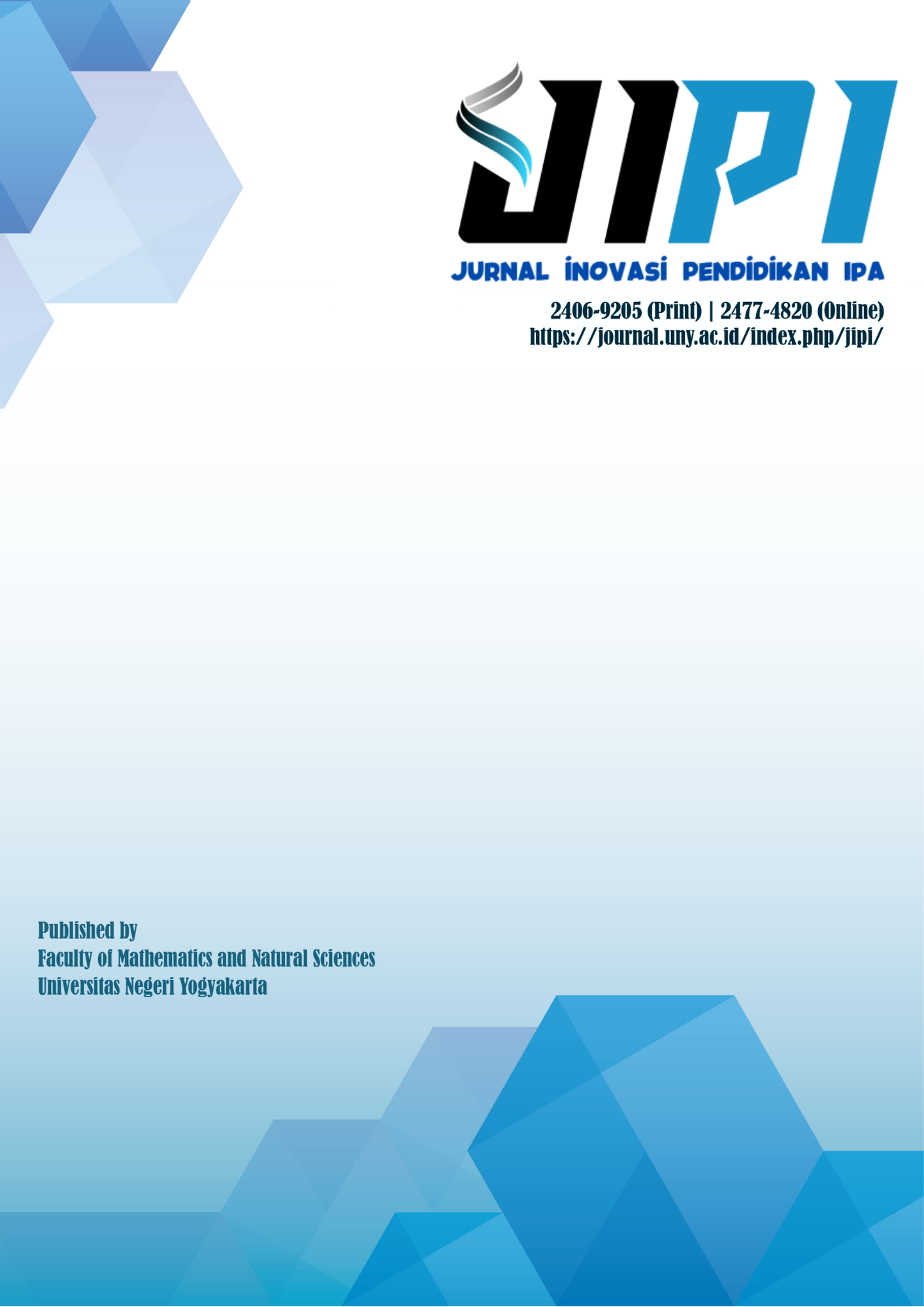Sainsmatika-based story tale book to improve environmental awareness of 4th grades students
DOI:
https://doi.org/10.21831/jipi.v4i1.21706Keywords:
sainsmatika-based story tale book, environmental awarenessAbstract
This study aimed to determine the effectiveness of sainsmatika-based storybooks to improve environmental awareness for students. The experimental research design was used in this study, which involved two classes, namely the control class and the experimental class. Each class consisted of 30 students. The research subjects were 60 students of grade 4 students consisting of 36 female students and 24 male students. The analysis process used an independent t-sample test to find out the differences in each outcome. The results showed that based on the gain value obtained, it found out that the average value of the pre-test results in the control class was 49.47 and the posttest result was 67.41. This showed that the increasing score in the pre-test and post-test control classes only reached 2.34 which can be classified as low. Whereas in the experimental class, the results showed that the average pre-test results in the experimental class was 52.63, and the post-test results were 78.90. It means that the students' environmental awareness on pre-test and post-test results were 3.48, which was in the medium category. The results of the experimental research showed that the use of sainsmatika-based storybooks has a significant impact on students' environmental awareness. The results of hypothesis testing on environmental awareness variables showed that there were significant differences between the control group and the experimental group. The experimental group was better than the control group (t count 3.124 at level p 0.01).
References
Anderson, R. (2009). Trough fairy-tales to Math in the lesson. Acta Didactica Napocensia, 2 (2), 112-118.
Boff, L. (2008). Essential care an ethics of human nature. Texas: Baylor University Press.
Buckingham, D. (2012). Media education: literacy, learning an contemporary culture. Cambridge: Polity Press.
Damon, W. (2002). Bringing in a new era in character education. California: Hoover Institution Press
Daryanto, D.,& Darmiatun, S. (2013). Implementasi pendidikan karakter di sekolah. Yogyakarta: Gava Media.
Erhabor, N. I., & Don, J. U. (2016). Impact of Environmental Education on the Knowledge and Attitude of Students owards the Environment. International Journal of Environmental and Science Education, 11(12), 5367-5375.
Held, V. (2006). The ethics of care: Personal, political, and global.New York: Oxford University Press, Inc.
Hendarson, K. L & Malone, S. L. (2014). Ethical fairy tales: using fairy tales as illustrative ethical dilemmas with counseling students. Journal of Creativity in Mental Health.7 (1), 64-82.
Huck, C. S., Hepler, S., & Hickman, J. (1987). Chindren's literature in the elementary school. New York: Holt, Rinchart and Wiston.
Kartadinata, S. (2009). Mencari bentuk pendidikan karakter bangsa. Makalah. Fakultas Ilmu Pendidikan. Universitas Pendidikan Indonesia. Bandung.
Kementerian Pendidikan dan Kebudayaan Republik Indonesia. (2011). Panduan pelaksanaan pendidikan karakter. Jakarta: Badan Penelitian dan Pengembangan Pusat Kurikulum.
Kready, L.F. (2004). A study of fairy tales. Boston: The Riverside Press.
Kurniawan, S. (2013). Pendidikan karakter: konsepsi dan implementasinya secara terpadu di lingkungan keluarga, sekolah, perguruan tinggi, dan masyarakat.Yogyakarta: Ar Ruzz Media.
Lexmond, J.,& R. Reeves. (2009). Building character.London: Demos.
Lickona, T. (1992). Educating for character how our school can teach respect and Responsibility. New York: Bantam Books.
Marpaung, M. (2012). Sekarang aku tahu: Sains dalam dongeng, fabel, legenda, dan cerita rakyat. Yogyakarta: Galang Press.
Martin, P. (2007). Caring for the environment: challenges from notions of caring. Australian Journalof Environmental Education, 23,57-64.
Marzuki, M. (2013). Revitalisasi pendidikan agama di sekolah dalam pembangunan arakter bangsa di masa depan. Jurnal Pendidikan Karakter, III(1), 64–76. https://doi.org/10.21831/JPK.V0I1.1288
Nazir, J. (2013). Connecting, care and agency: the nature of environment education at an outdoor education centre.Ontario: Toronto University.
Prastowo, A. (2015). Panduan kreatifmembuat bahan ajar inovatif: menciptakan metode pembelajaran yang menarik an menyenangkan.Yogyakarta: Diva Press
Wangid, M. N., Mustadi, A., Erviana, V. Y., & Arifin, S. (2014). Kesiapan guru SD dalam pelaksanaan pembelajaran tematik-integratif pada kurikulum 2013 di DIY. Jurnal Prima Edukasia, 2(2), 175–182. https://doi.org/10.21831/jpe.v2i2.2717
Widiyoko, E. P. (2009). Evaluasi program pembelajaran: panduan praktis bagi pendidik dan calon pendidik.Yogyakarta: Pustaka Pelajar.
Yaumi, M. (2014). Pendidikan karakter landasan, pilar & implementasi. Jakarta: Prenada media Group
Downloads
Published
How to Cite
Issue
Section
Citation Check
License
The authors submitting a manuscript to this journal agree that, if accepted for publication, copyright publishing of the submission shall be assigned to Jurnal Inovasi Pendidikan IPA (JIPI). However, even though the journal asks for a copyright transfer, the authors retain (or are granted back) significant scholarly rights.
Jurnal Inovasi Pendidikan IPA by http://journal.uny.ac.id/index.php/jipi/index is licensed under a Creative Commons Attribution-ShareAlike 4.0 International License.










